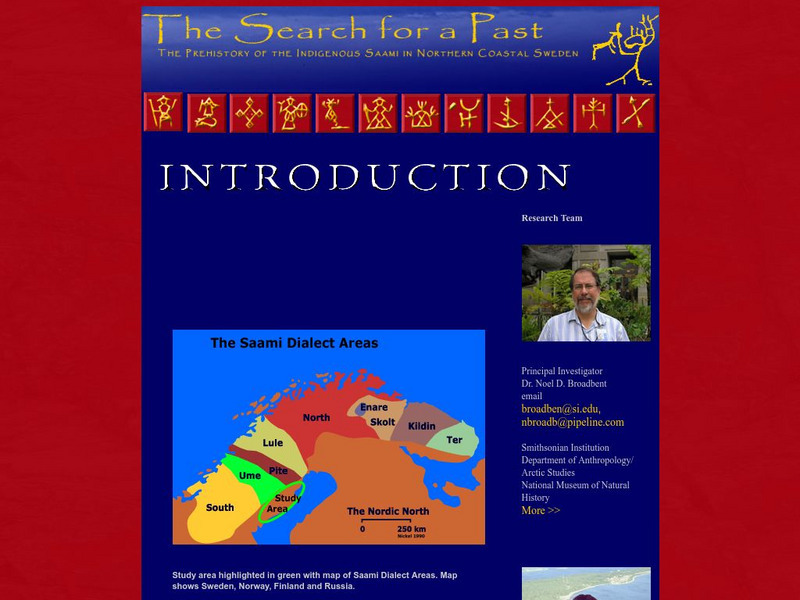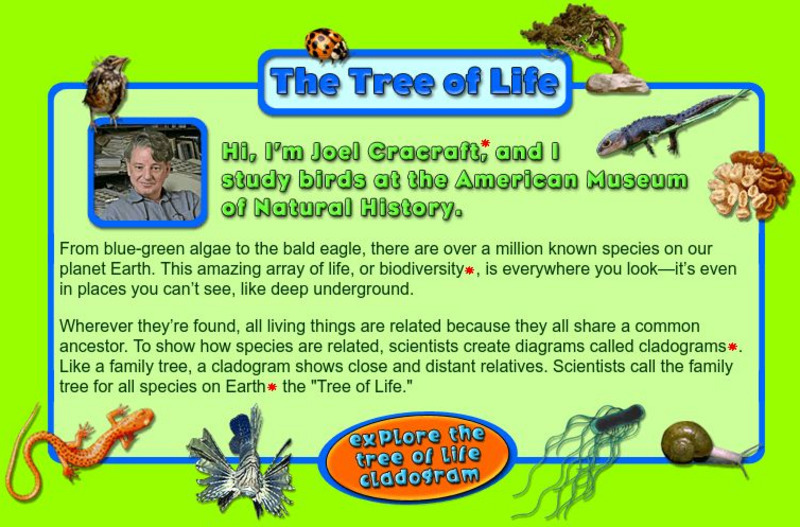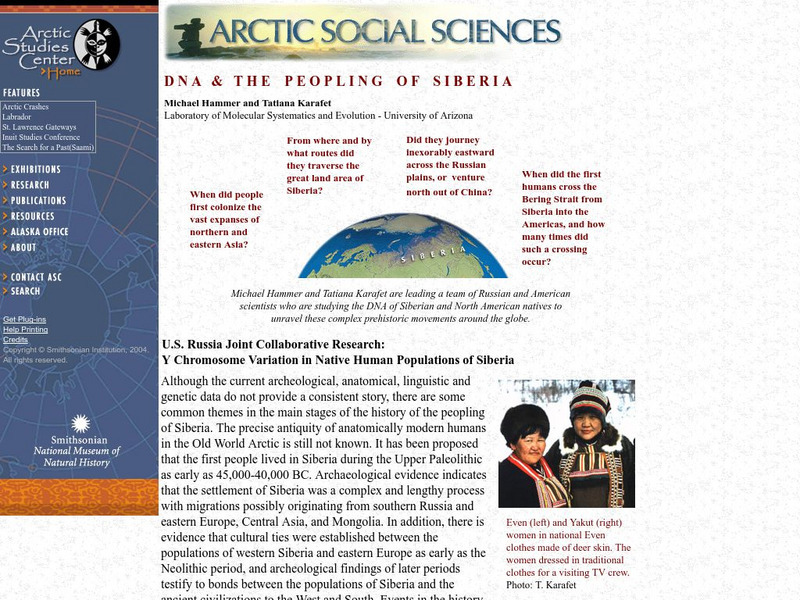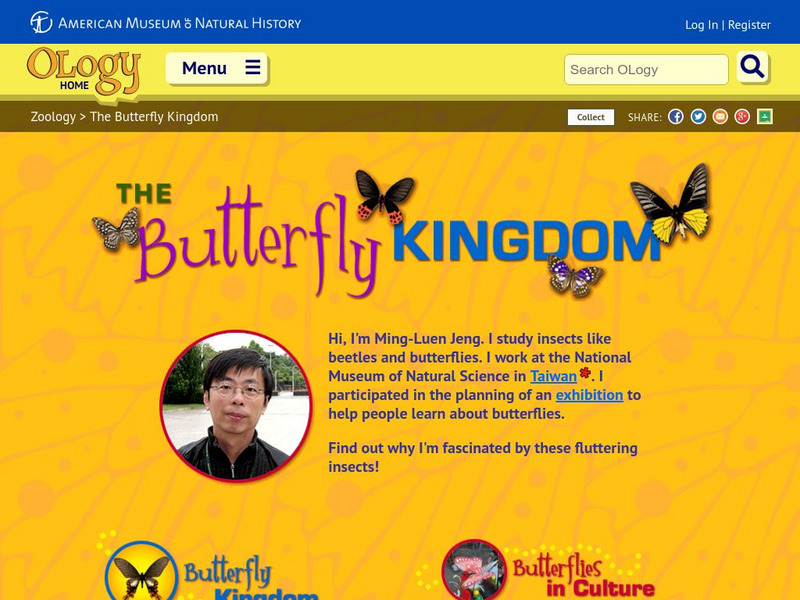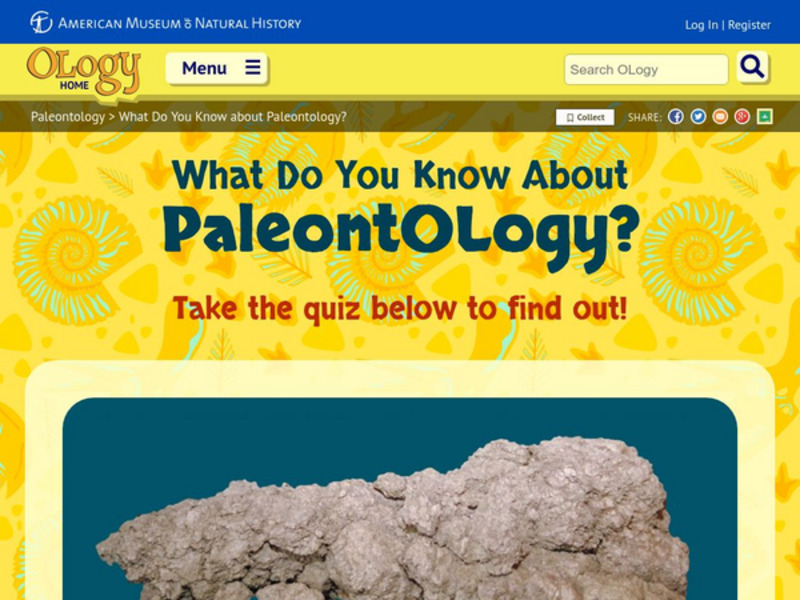Smithsonian Institution
National Museum of Natural History: Search the Giant Squid
This site explores, in detail, what is known about the Giant Squid, and current efforts to uncover the squid in its natural habitat.
American Museum of Natural History
American Museum of Natural History: Resources for Learning: The Path to El Nino
Through this resource, students explore the history, causes, effects, and patterns of El Nino.
Smithsonian Institution
National Museum of Natural History: The Splendor of Diamonds
A collection of seven rare diamond types, among the most valuable in the world. All but one is a unique color, and each has a special title. Read a short descriptive history of each diamond.
American Museum of Natural History
American Museum of Natural History: Traveling the Silk Road: Take a Journey
Learn about some of the ancient Asian and Middle Eastern cities along the Silk Road between AD 600 and 1200. Highlights Xian, Turfan, Samarkand, and Baghdad, as well as those who traveled by sea.
Smithsonian Institution
National Museum of Natural History: The Living Yamal
A Smithsonian site that tells of the history and culture of the Yamal people of Siberia.
American Museum of Natural History
American Museum of Natural History: O Logy: Beautiful Breeds: Arabian
Detailed illustrations and description of the Arabian, a horse prized throughout history for its power and speed. Choose Arabian from the list on the right.
American Museum of Natural History
American Museum of Natural History: Inca Investigation
Be an archaeologist and examine maps and ancient artifacts relating to the Inca empire.
English Zone
English Zone: Los Angeles Area Gets a New Spider
This is an article from The Natural History Museum of Los Angeles about a new tropical "Brown Widow" spider found in Los Angeles; it is followed by 15 self-grading questions.
Smithsonian Institution
National Museum of Natural History: Paleobiology: Absolute Dating
An explanation of radiometric or absolute dating of geological formations based on using the half-life of radioactive elements to figure out how old given rock layers are. A link on the left provides information about relative dating as...
Smithsonian Institution
National Museum of Natural History: Indigenous Saami in Northern Coastal Sweden
The Saami people of Sweden are the focus of study for this Smithsonian research team. There are photos of Saami archaeological sites and descriptions of their cultural practices. Links for further research are provided.
American Museum of Natural History
American Museum of Natural History: How Lou Got the Flu
Illustrated storybook description of how the influenza virus spreads from animals to humans.
American Museum of Natural History
American Museum of Natural History: O Logy: Dive Into Worlds Within the Sea
Learn about three different marine ecosystems: coral reefs, the continental shelf, and the deep sea. Interactive game included, which will help players chart the interrelationships among organisms that live in each ecosystem.
American Museum of Natural History
American Museum of Natural History: Sharks and Rays: Myth and Reality
Learn about the reproductive system of the dogfish shark through a video gallery. Also read about the myth that sharks must constantly swim or they will die. PDF transcripts are available for each video.
American Museum of Natural History
American Museum of Natural History: O Logy: The Tree of Life
Learn about the diversity of species on Earth by exploring a cladogram, a graph-like tree of life that illustrates relatedness among species. Includes instructions for reading cladograms and a pie chart that summarizes the percentages of...
Smithsonian Institution
National Museum of Natural History: Arctic Science: Dna and the Peopling of Siberia
Scientists from the University of Arizona are conducting Y chromosome research on native Siberians to try to determine whether there is a genetic affinity to North American native people. The rationale and direction of this research are...
Smithsonian Institution
National Museum of Natural History: Expedition to Galapagos
Accompany scientists on an exciting trip to the Galapagos as they make a film on the islands for IMAX. Featured are a fantastic photo journal and video footage.
American Museum of Natural History
American Museum of Natural History: Ology: The Butterfly Kingdom
Learn about Taiwan's amazing wealth of butterflies, many of which can be found nowhere else in the world. See how butterflies have influenced Taiwanese culture, how some people have made a business from butterflies, and about efforts...
American Museum of Natural History
American Museum of Natural History: O Logy: What Do You Know? Archaeology
A ten question quiz on the study of archaeology.
American Museum of Natural History
American Museum of Natural History: O Logy: What Do You Know? Dinosaurs
Test knowledge about dinosaurs with this ten question quiz.
American Museum of Natural History
American Museum of Natural History: O Logy: What Do You Know? Climate Change
Test your knowledge on climate change with this short quiz.
American Museum of Natural History
American Museum of Natural History: O Logy: Layers of Time: Fossil Game
Game through which students order layers of sedimentary rock, from oldest to newest, based on the type of fossils they contain.
Carnegie Museum of Natural History
Carnegie Museum of Natural History: Needle to the North
Online exhibit explores Arctic expeditions of the twentieth-century via the photos and field notes of researchers who experienced the "alien landscape rife with cold, darkness, and isolation."
Smithsonian Institution
National Museum of Natural History: Ocean Portal: Corals and Coral Reefs
Learn about corals and the importance of coral reefs to ocean ecosystems. Find out how reefs are created, what threats they face, and what kinds of conservation tactics are being used to protect and preserve them.
American Museum of Natural History
American Museum of Natural History: O Logy: Stuff to Do: Create a Coral Reef
Detailed instructions, with photographs for every step, for how to build a coral reef diorama.







